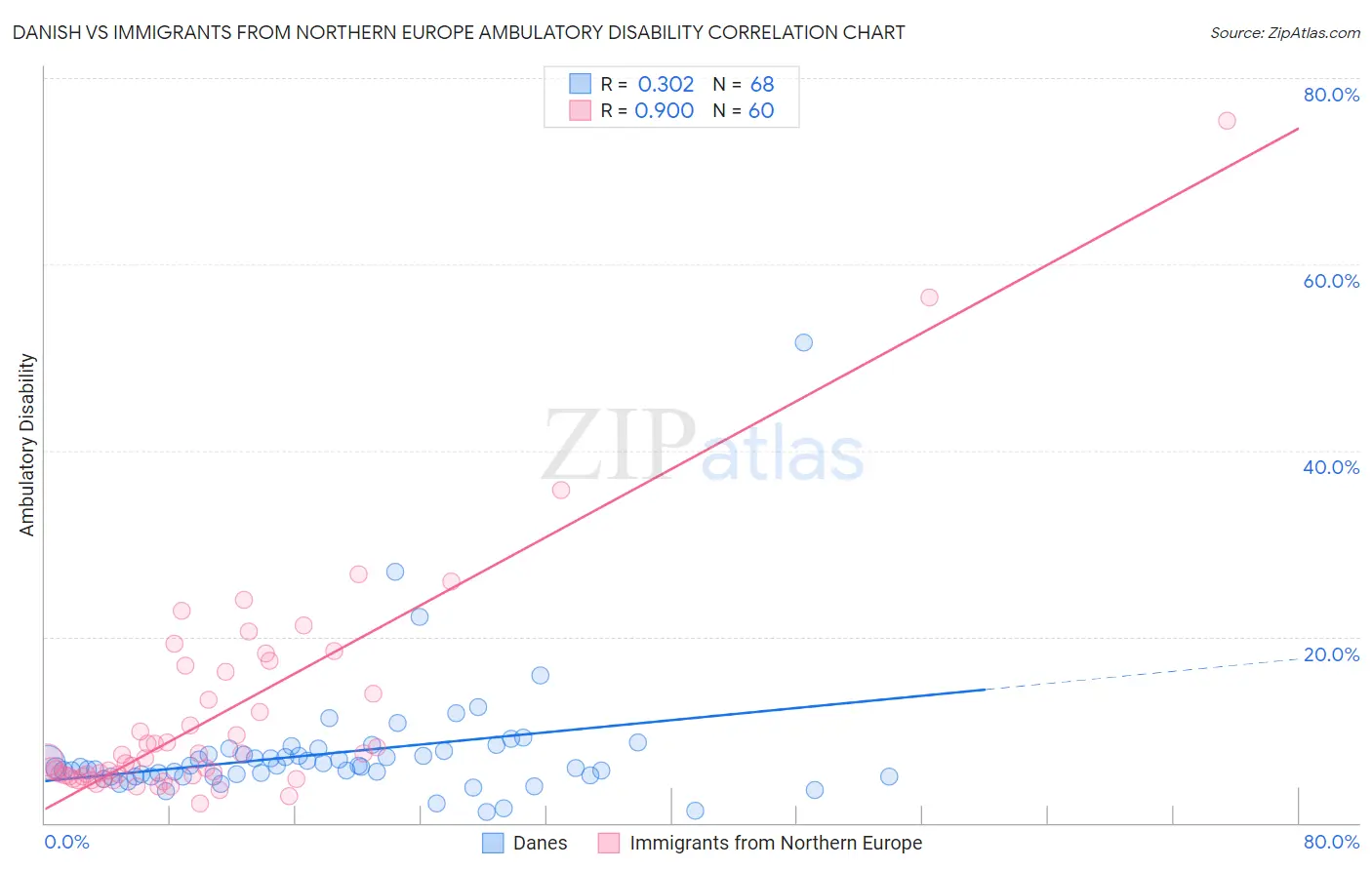Danish vs Immigrants from Northern Europe Ambulatory Disability
COMPARE
Danish
Immigrants from Northern Europe
Ambulatory Disability
Ambulatory Disability Comparison
Danes
Immigrants from Northern Europe
5.8%
AMBULATORY DISABILITY
96.6/ 100
METRIC RATING
111th/ 347
METRIC RANK
5.8%
AMBULATORY DISABILITY
98.2/ 100
METRIC RATING
99th/ 347
METRIC RANK
Danish vs Immigrants from Northern Europe Ambulatory Disability Correlation Chart
The statistical analysis conducted on geographies consisting of 473,952,893 people shows a mild positive correlation between the proportion of Danes and percentage of population with ambulatory disability in the United States with a correlation coefficient (R) of 0.302 and weighted average of 5.8%. Similarly, the statistical analysis conducted on geographies consisting of 477,075,376 people shows a very strong positive correlation between the proportion of Immigrants from Northern Europe and percentage of population with ambulatory disability in the United States with a correlation coefficient (R) of 0.900 and weighted average of 5.8%, a difference of 0.92%.

Ambulatory Disability Correlation Summary
| Measurement | Danish | Immigrants from Northern Europe |
| Minimum | 1.2% | 2.1% |
| Maximum | 51.6% | 75.4% |
| Range | 50.4% | 73.3% |
| Mean | 7.5% | 11.7% |
| Median | 6.1% | 6.9% |
| Interquartile 25% (IQ1) | 5.0% | 5.0% |
| Interquartile 75% (IQ3) | 7.5% | 15.1% |
| Interquartile Range (IQR) | 2.5% | 10.1% |
| Standard Deviation (Sample) | 6.7% | 12.6% |
| Standard Deviation (Population) | 6.7% | 12.5% |
Demographics Similar to Danes and Immigrants from Northern Europe by Ambulatory Disability
In terms of ambulatory disability, the demographic groups most similar to Danes are Immigrants from Colombia (5.8%, a difference of 0.070%), South African (5.9%, a difference of 0.13%), Immigrants from Netherlands (5.8%, a difference of 0.25%), Colombian (5.8%, a difference of 0.27%), and Uruguayan (5.8%, a difference of 0.28%). Similarly, the demographic groups most similar to Immigrants from Northern Europe are Immigrants from Lebanon (5.8%, a difference of 0.090%), Immigrants from Somalia (5.8%, a difference of 0.11%), Salvadoran (5.8%, a difference of 0.15%), Immigrants from El Salvador (5.8%, a difference of 0.17%), and Immigrants from Serbia (5.8%, a difference of 0.19%).
| Demographics | Rating | Rank | Ambulatory Disability |
| Immigrants | El Salvador | 98.4 /100 | #95 | Exceptional 5.8% |
| Salvadorans | 98.4 /100 | #96 | Exceptional 5.8% |
| Immigrants | Somalia | 98.3 /100 | #97 | Exceptional 5.8% |
| Immigrants | Lebanon | 98.3 /100 | #98 | Exceptional 5.8% |
| Immigrants | Northern Europe | 98.2 /100 | #99 | Exceptional 5.8% |
| Immigrants | Serbia | 97.9 /100 | #100 | Exceptional 5.8% |
| Immigrants | South America | 97.9 /100 | #101 | Exceptional 5.8% |
| Immigrants | Kenya | 97.8 /100 | #102 | Exceptional 5.8% |
| Immigrants | Romania | 97.7 /100 | #103 | Exceptional 5.8% |
| New Zealanders | 97.6 /100 | #104 | Exceptional 5.8% |
| Immigrants | Czechoslovakia | 97.4 /100 | #105 | Exceptional 5.8% |
| Immigrants | Morocco | 97.3 /100 | #106 | Exceptional 5.8% |
| Uruguayans | 97.2 /100 | #107 | Exceptional 5.8% |
| Colombians | 97.2 /100 | #108 | Exceptional 5.8% |
| Immigrants | Netherlands | 97.1 /100 | #109 | Exceptional 5.8% |
| Immigrants | Colombia | 96.7 /100 | #110 | Exceptional 5.8% |
| Danes | 96.6 /100 | #111 | Exceptional 5.8% |
| South Africans | 96.3 /100 | #112 | Exceptional 5.9% |
| Immigrants | Uruguay | 95.6 /100 | #113 | Exceptional 5.9% |
| Immigrants | Poland | 95.4 /100 | #114 | Exceptional 5.9% |
| South American Indians | 94.8 /100 | #115 | Exceptional 5.9% |